What is a pop-up blocker on Mac?
A pop-up blocker is one of those quietly effective browser features most users don’t think about – until they need to. By their gist, these tools help control how websites interact with your screen. Simply put, they prevent unsolicited windows from launching and disrupting your workflow. Their core purpose is to stop intrusive ads, malicious redirects, and potential phishing attempts from hijacking your browsing session.
From a security and privacy standpoint, pop-up blockers play a bigger role than many users think. For instance, they can suppress windows spawned by adware extensions – those that sneak into the browser after piggybacking on seemingly harmless apps. I have covered multiple outbreaks of that kind over the years, and in fact, that’s arguably still the top scourge across the Mac ecosystem.
Once installed, such extensions may trigger fake virus alerts, dodgy sweepstakes, or other attention-grabbing content that potentially puts your system or personal data at risk. The pop-up blocker prevents all these from appearing on your screen. In that context, it provides guardrails against deceptive content and browser-based threats, and from where I stand, it’s hard to overestimate the importance of this precaution today.
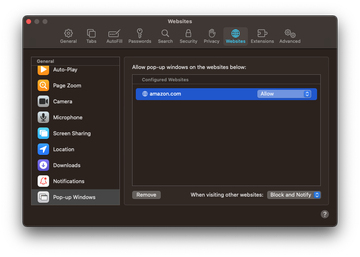
Why you might want to disable pop-up blocking on Mac
Despite their benefits, pop-up blockers don’t always get it right. In some scenarios, they might block windows that are necessary for a website’s functionality, such as login forms, chat widgets, or document previews. These interruptions can go as far as making it seem like a website is broken or unresponsive, when in fact the blocker is just doing its job a little too aggressively.
There are also usability and user experience angles to consider. Some e-commerce websites display first-time visit promotions (like coupons, discount codes, or welcome offers) through pop-ups. If these are prevented from showing up, you might miss out on savings you would have otherwise qualified for. Similarly, cookie consent requests or regional content disclaimers are often delivered as pop-ups. Without interacting with them, you may not be able to access the site’s full content or proceed beyond the landing page.
To recap, while pop-up blockers provide valuable protection, there are practical reasons for disabling them temporarily, especially when dealing with sites you trust or services that rely on pop-ups to function correctly.
There’s no system-wide setting to control pop-ups in one place on Mac. Instead, macOS leaves the browsers to determine when to allow or suppress new windows. Without further ado, let’s go over the ways to manage this functionality in the most popular browsers: Safari, Chrome, and Firefox.
How to turn off pop-up blocker in your web browser
Each browser handles pop-up control in a slightly different way. Here’s how to find and disable the feature in Safari, Google Chrome, and Mozilla Firefox on macOS.
- Turn off pop-up blocker in Safari
Deactivating the pop-up blocker in Safari is straightforward, though the setting isn’t labeled quite as clearly as in other browsers. Also, Safari lets you apply this setting globally or customize it for specific websites. Without further ado, the procedure is as follows:
- Open Safari. In the menu bar, click Safari > Settings (or Preferences, depending on version).
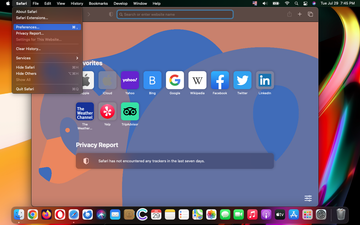
- Go to the Websites tab and select Pop-up Windows in the sidebar.
- To enable pop-ups for a specific site, choose Allow from the dropdown next to it.
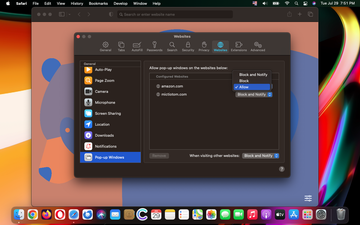
- If you’d rather give the green light to all pop-ups going forward, scroll to the bottom where it says “When visiting other websites” and select Allow. Safari doesn’t use the term “pop-up blocker” directly, but this is the setting that controls it.
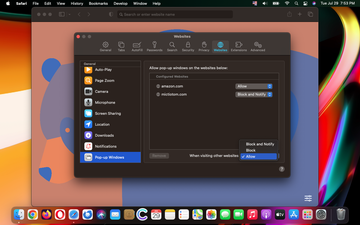
- Disable pop-up blocker in Chrome on Mac
In Chrome, disabling the pop-up blocker is a matter of adjusting a clear toggle in the browser’s settings. You can also set exceptions for specific sites.
- Open Chrome. Click the three-dot menu icon in the top right-hand corner of the browser window and select Settings.
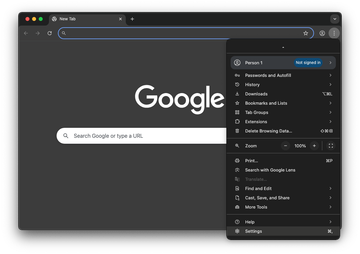
- Navigate to Privacy and security.
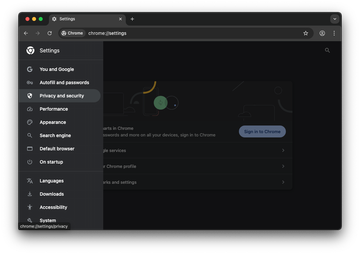
- Scroll down to Site settings.
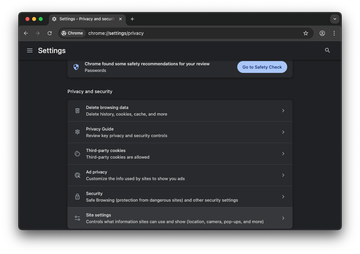
- Click on Pop-ups and redirects as illustrated below.
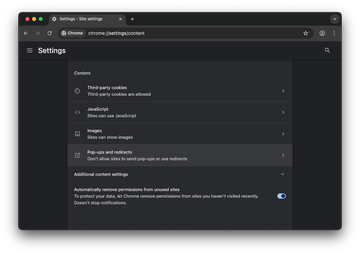
- Select the option that says, “Sites can send pop-ups and use redirects” to turn off the pop-up blocker globally.
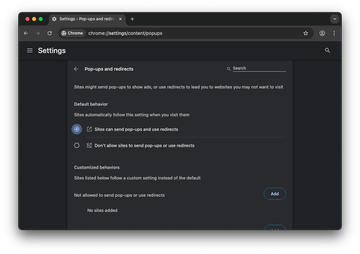
- To enable pop-ups only for a specific website while keeping the default setting, click Add next to the “Allowed to send pop-ups and use redirects” section, enter the site’s URL, and click Add in the dialog box.
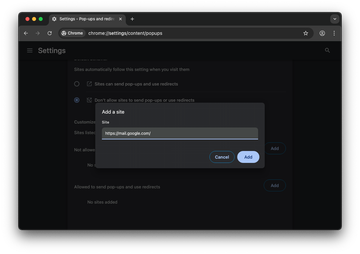
- The site you’ve just added will now be listed as an exception and can show pop-ups despite the global blocking configuration in Chrome.
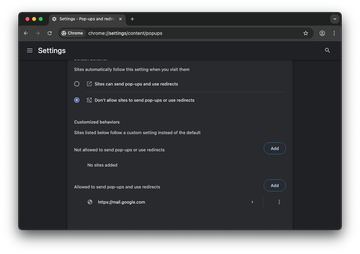
- Stop pop-up blocking in Firefox on Mac
Firefox takes a slightly more conservative stance on pop-ups, but it still allows you to toggle the setting or specify exceptions.
- Open Firefox. Click the three-line menu in the top right-hand corner and select Settings.
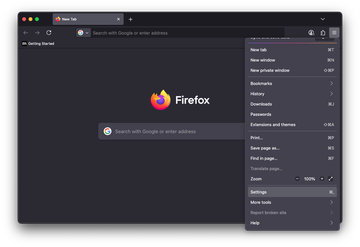
- Choose Privacy & Security in the sidebar, scroll down to the Permissions section, and uncheck the box next to the Block pop-up windows option as shown below.
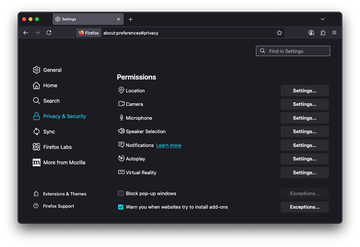
- If you’d like to keep the default setting as is but allow pop-ups for a specific site, click on Exceptions to the right of the “Block pop-up windows” option, enter the site’s URL, click Allow, and click Save Changes.
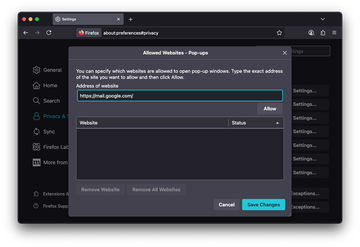
- The site will now be displayed in the exceptions area, along with its current status (Allow). You can easily remove it from the list at a later point if necessary.
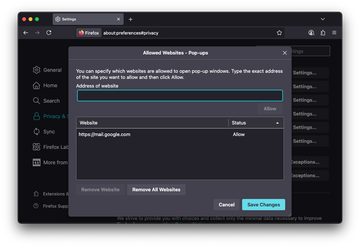
Wrapping up
Pop-up blockers on macOS aren’t hidden behind deep system settings – they’re browser-level features, designed to keep your web experience clean and secure. But when a legitimate task is being interrupted, knowing how to temporarily switch that protection off is helpful. Whether you’re dealing with Safari’s site-specific controls, Chrome’s global toggle, or Firefox’s permission manager, the key is to understand what the blocker is doing, and when it’s okay to give it a break.
